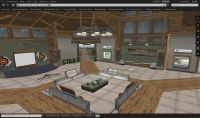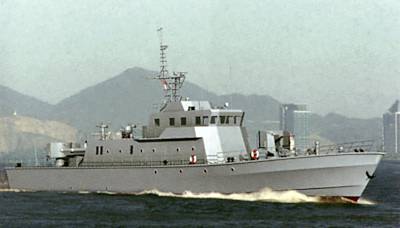WASHINGTON — The Defense Department is using virtual-world interactivity to educate and help warfighters and others who are reluctant to seek more direct care to deal with post-traumatic stress, said an official at the National Center for Telehealth and Technology, also known as “T2.”
During a recent telephone briefing from the center’s headquarters at Joint Base Lewis-McChord in Tacoma, Wash., Greg Reger — a clinical psychologist and acting chief of the center’s innovative technology applications division — said the kinds of immersive experiences available in virtual worlds, such as the internationally populated virtual world called Second Life, are designed to appeal to tech-savvy service members and their families.
“Far too many of our warriors come home and, despite difficulties they are having, are not going to come and see a psychologist, a social worker, a psychiatrist,” Reger said.
According to the center’s website, many researchers have declared traumatic brain injury and post-traumatic stress to be the “signature wounds” of the wars in Iraq and Afghanistan. About 19 percent of service members returning from combat screen positive for psychological health problems, and just more than half seek help, the website says, noting that barriers for those that don’t seek help include perceived stigma, physical access barriers and limited resources.
“There’s a lot of great work going on at DOD to address stigma, but it is still an issue,” Reger said. “So we desperately need solutions to get resources into the hands of those who will not give us the opportunity to provide them basic care.”
Virtual worlds are computer-based simulated environments where users, as representations of themselves called avatars, can interact with each other and build and interact with objects and activities.
“An avatar is basically a computer-generated representation of oneself,” Reger said, adding that users create these computer characters to navigate around the environment and to explore and learn.
The T2 Virtual PTSD Experience, based in Second Life, is an immersive, interactive learning activity that is open to the public and educates visitors about combat-related post-traumatic stress.
The graphics-dense immersive simulation requires a broadband Internet connection, he said. Users must download a copy of the Second Life world and then can access the world from any computer with a broadband connection.
When avatars come into the virtual space, Reger said, they land at a welcome center that offers information about different deployment-related difficulties and a map of activities available in the T2 virtual experience.
“The cornerstone of the experience is when they leave that area and go into an area that teaches about the causes of post-traumatic stress disorder,” Reger said. “They enter a space where they get into a Humvee and are taken through a computer-generated simulation that includes [intense fighting on an Afghan street and] an explosion.
“As this occurs,” he continued, “they receive audio instruction about what we think causes post-traumatic stress disorder, and this sets the stage for the rest of the experience.” Users then take a simulated flight home, during which they watch a video about post-traumatic stress. They land at a shopping mall, where each store offers an activity that illustrates a symptom and how it may affect daily life.
For example, Reger said, in the mall is a mattress store.
“If you go into the store, you have an opportunity to lie down on a mattress and a video pops up over the avatar’s head that illustrates a re-experiencing of the traumatic event they experienced earlier during the simulation,” he said. “Then information is presented on the nature of trauma-related nightmares and sleep disturbances.”
The environment uses a range of activities to simulate symptoms and help visitors determine if they or a loved one need care, and offers information about where to go for more direct assistance.
“Second Life provides the opportunity to interact with anyone who is in that space. Any warrior who goes in there will be able to talk with whoever is in that space,” Reger said. “We know that many of the difficulties that our warriors have result in increased social isolation and diminished interest in getting outside the home and interacting with other people,” he added. “We do wonder about the potential in this space to really get some of these folks connected with each other in a meaningful way that might be helpful.”
The National Center for Telehealth and Technology is a component of the Defense Centers of Excellence for Psychological Health and Traumatic Brain Injury, which leads a collaborative global network to promote the resilience, recovery and reintegration of warriors and their families.
“We created an environment that lets people learn by doing, rather than reading text and watching videos on two-dimensional websites,” Kevin Holloway, the psychologist who led T2’s virtual-world development, said in a statement. “They can learn something new each time they visit.”
Source:
U.S. Department of Defense
Office of the Assistant Secretary of Defense (Public Affairs)

 von
von 
